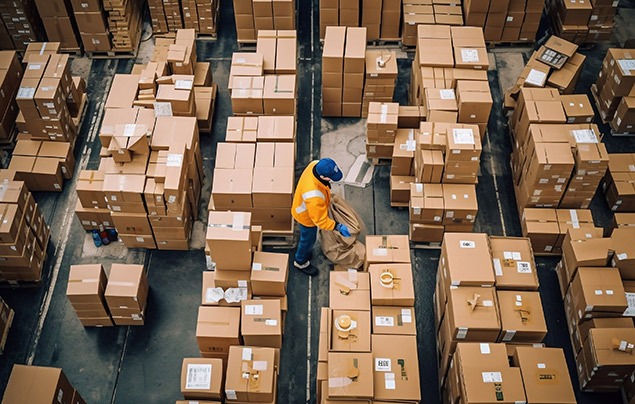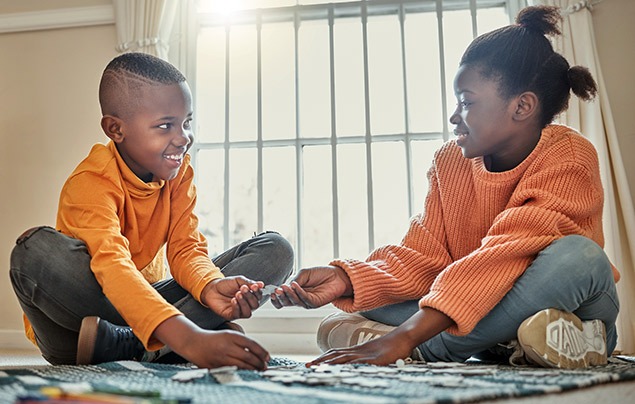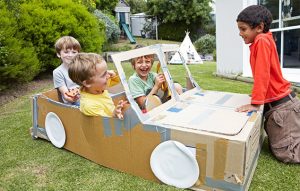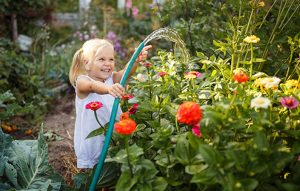Your guide to sustainable shopping
Kids always want new stuff – especially when big events are on the horizon – so here are some top tips for eco-friendly shopping.
Knowing that a big event is coming up can prompt kids’ need for new things. Whether it’s uniform that fits, ‘cool clothes’ for hanging out with friends, or new stationery for class, the back-to-school shopping list can grow and grow. But is this sustainable shopping?
It’s natural for kids to want new items. But even though most kids are passionate about protecting the environment, they’re not always aware of how their consumption affects it.
“Eventually, stuff becomes another piece of plastic that will never biodegrade in kids’ lifetimes,” says Molly Nation, assistant professor of environmental education at Florida Gulf Coast University. “You can ask: Are you prepared to have this item not decay in landfill for however long amount of time? Being really intentional about our purchases and understanding our greater footprint is a great start.”
Here’s how you and your family can restock in an eco-friendly way – with sustainable shopping in mind.
What shopping does to the Earth
Before you get your family set on a more planet-focused way to shop, it’s helpful to know the difference you’ll be making.
If you’ve ever ordered something in a few colours or sizes with a plan to keep just one, you’re not alone. 40% of us shop that way. (It even has a name: ‘bracketing’.)
But a huge amount of our solid waste comes from packaging – that is, things that are used to ship, store and protect products, which is discarded soon after the product is purchased. And those returns? Often, like packaging, they simply end up in landfill.
Why all the waste instead of your item being resold? “It might take too much time and effort to inspect every product,” says Meagan Knowlton, director of sustainability at Optoro, a company that helps businesses streamline their returns to reduce waste. “These companies are really good at selling to you. They’re not necessarily optimised at returns.”
Knowlton adds that the transportation of those returns adds up to nearly 16 million metric tons of carbon dioxide emissions. That’s about the yearly emissions of 3.5 million cars.
Plastic problems
But reducing fossil fuel consumption from shopping isn’t just about vehicle emissions. It’s also about the environmental cost of production, especially when creating synthetic plastics from natural gas, coal or crude oil.
That can include lots of back-to-school shopping items like synthetic fabrics, glitter or even erasers that are hard to recycle. If nothing changes, a team of experts from organisations including the Centre for International Environmental Law predicts that CO2 emissions from producing plastic products could triple by 2050.
And what happens to those products is concerning. According to a report published by the American Association for the Advancement of Science, as of 2015, 79% of the plastic produced in the last 10 years was in landfills or littering the environment. And 40% of that plastic comes from – you guessed it – packaging.
Talking to kids about sustainable shopping
Kids care deeply about protecting the environment, but their brains are also wired to want new stuff. That’s because the thrill of shopping can boost the feel-good hormone dopamine in kids’ noodles.
“Many people think that dopamine is released when the brain receives a reward. But dopamine is actually released in anticipation of a reward,” says Asha Patton-Smith, a child and adolescent psychiatrist. “So, the build-up in dopamine before the buy, then surges with the buy.”
Patton-Smith suggests reconciling kids’ need to be kind to Earth with their need for more stuff by having a series of conversations – and by modelling good behaviour.
“Parents are the best example,” she says. “By consistently not buying the new, hot thing themselves, or by explaining to kids what they’re buying and why they’re buying it, kids will learn through experience.”
Break it down.
Start by helping children think critically about their consumption: “What is this thing doing to help the environment, or how is it hurting the environment?” If they’re salivating over, say, a cartoon-figure lunch box, have them think about where the product came from and how it gets to your house. Older kids can break down the cost of transport, how much fuel is used, or how much water is used to grow the raw materials.
“So, kids begin to understand the lunch box is so much more than what they see,” Patton-Smith says.
And even if you broke down and bought those sparkly new trainers, Patton-Smith suggests checking in after a few weeks to see if kids still feel the same way about the product.
“Those dopamine levels fall after the buy,” she says. “Use that instant gratification as a teaching moment to reshape how children look at things.”
Show them the reality.
Sometimes the best way to show kids the impact of their consumption is to bring them face-to-face with their actions by visiting a recycling centre, landfill or dump.
“I was once told that when you throw something away, it’s going away from you, but it’s not actually going away,” Knowlton says. “It’s staying on the Earth, it’s going to a dump or a landfill, and it’s going to sit there for a long, long time. If you keep using a product, you’re keeping something in use and not putting it in a dump.”
Here at National Geographic Kids, sustainability is at the fore-front of our business. That’s why, in the UK, our monthly magazines are plastic-free and made from recycled paper. Plus, they’re recyclable too! Learn about all the other benefits of a National Geographic Kids subscription today.
Top tips for sustainable shopping
Experts agree that mindful shopping – whether it’s your back-to-school shopping list, throwing an (almost) zero waste party, or a sustainable shopping goal for Christmas – is key to teaching kids about Earth-friendly consumption. “We can raise a generation that has totally different buying habits than we had in the past.” Nation says.
Here’s how your family can get that done this season…
Look for stuff that lasts.
That cute K-pop lunchbox probably isn’t going to have the same appeal in a few months. But a sleek, more durable lunch container stays hip at all ages. Ellis Jones, associate professor of sociology at the College of the Holy Cross, says you can use your kids’ desire to be more grown-up to Earth’s advantage.
“I often frame it as ‘Would you prefer to buy that water bottle with your favourite character on it, or would you prefer one like Dad has?” he says. “They feel even cooler because they have one that’s something you earn as an adult.”
Be patient.
Explain to kids that by waiting a little longer for their order, they can reduce the number of delivery cars on the road – and the greenhouse gases they emit. Even if you end up getting multiple packages after foregoing fast shipping, you’re likely making a difference.
“The products may be coming from two warehouses, but they’re sending two trucks fully loaded to your location rather than sending one car to your house,” says Miguel Jaller, co-director of the sustainable freight research program at the University of California Davis. “If you don’t need two-hour delivery, don’t use two-hour delivery.”
Look for swapping or gently-used items.
When mum Annamarie Dopheide’s six-year-old wants a new plastic fad item (say, one of those hot pop-it fidgets to keep at his desk), “I let him help me make a post in our local ‘Buy Nothing’ group,” she says. If it doesn’t appear, they’ll shop for a more sustainable version.
If you can, try to buy better quality.
Remind kids that fast fashion items might be cheap, but they’ll likely wind up in a landfill much sooner than something better made – and if that happens, they might end up disappointed. “Buying higher-quality products means you’re buying less of them,” Nation says.
So, if you need just one pair of leggings or one backpack, explain that it’s better for the Earth to spend the same money on the one you really need than to buy two cheaper-but-trendier ones for the same price. Shopping on second-hand marketplaces may make those originally more expensive items easier to obtain, too.
Do a scavenger hunt.
Before picking up a new binder just because it’s cool, have kids search the house for something similar they could decorate themselves. If it’s still a must-have? “I’ll often tell my five-year-old, ‘Let me take a picture of it and we’ll talk about it later this week if you still want it,’” Jones says. “I wait to see if she asks about it, and if she doesn’t, she’s let it go.”
Care for returns.
Returns aren’t ideal, but they happen. So, make sure your kids understands that the quicker you return something that’s been kept in perfect shape, the more likely the item will be resold and kept out of a landfill. “Try to maintain the original packaging as best you can,” Knowlton says. Then you can reuse it to send it back.
Bargain shop.
At the same time, kids can help keep other people’s returns out of dumps by doing some bargain hunting for high-quality sustainable shopping. Often, Knowlton says, items in the clearance section are returns – and just as good as full-price goods. If your kid isn’t sold on clearance, Patton-Smith suggests showing off your own finds to warm them up to the idea.
Fix what you can.
Are your kids great at fixing things? Let them find repair videos online for that broken zip, leaky water bottle or jammed mechanical pencil. They’ll feel proud, and the stuff might survive another season.














LEAVE A COMMENT
THANK YOU
Your comment will be checked and approved shortly.
WELL DONE,
YOUR COMMENT
HAS BEEN ADDED!
COMMENTS
CUSTOMIZE YOUR AVATAR